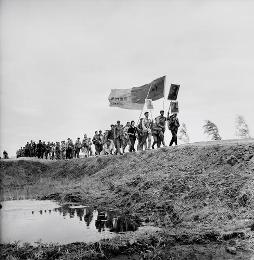
By Trailokya Jena
After stalling the US in Korea Mao was in a hurry to take China towards great nation status. Lack of economic progress made Mao impatient with traditional methods leading him to his grand scheme of radical redistribution of land among rural poor and formed Communes for urban workers to boost productivity. This movement launched in 1958 was called the Great Leap Forward(GLF). However relentless pushing of farmers and the Communes to work nonstop for producing more failed disastrously resulting in death of millions following widespread famine. Thus GLF became a resounding failure to end in 1962, as some say the war against India was a ploy distracting attention from failed GLF which probably cost between 23 to 55 millions of life. Around this time Nikita Khrushchev, who succeeded Stalin in 1953, began softening Soviet internal policy veering away from Stalin purges. While Mao was into his GLF, Khrushchev was de-Stalinising Soviet Russia and dismantling Stalin’s personality cult. Khrushchev’s successes in Suez Crisis, Sputnik space programme, Cuban Revolution etc helped him erase Stalin’s memory. Mao apprehended similar fate for his legacy as his popularity was waning. Mao felt his own legacy potentially suffering Stalin’s fate denying him his desired place in pantheon of great Communist leaders, Marx and Lenin. and began to find ways to seal his legacy as the face of Chinese Communism. But by early 1960s his once great influence and public presence was at all time low. Besides there were rumours around his health that he was dying. Staring at such loss of personal space in history, Mao undertook a propaganda stunt, of which he was a master, of swimming across the mighty Yangtze River! Publicity photo of a healthy Mao waving from the water with the iconic Wuhan Bridge in background (amazing how often Wuhan features in key moments of Chinese history) made him hero amongst youngsters and a model for students. Shrewdly mobilising these student groups, whom he converted to paramilitary force called Red Guards, Mao launched his famous Cultural Revolution.
Launched in 1966 as Great Proletarian Cultural Revolution Mao sought to reassert his authority over the Party and country. Mao declared that “those representatives of bourgeoisie who have sneaked into the Party, Government, Army, and various spheres of culture particularly academia are a bunch of counter revolutionary revisionists and they can only be removed by a violent class struggle”. Convincing students turned Red Guards and arming them with copies of his little Red Book, Mao sold the idea that current Communist leaders were taking the party and China itself in wrong direction and called on the nation’s youth to purge the “impure” elements of Chinese society to revive the revolutionary spirit that had led to formation of the People’s Republic of China in 1949. Shutting down nation’s schools and colleges he called for a massive youth mobilization to take current party leaders to task for their embrace of bourgeois values and lack of revolutionary spirit. A personality cult quickly sprang up around Mao, similar to that which existed for Josef Stalin, with different factions of the movement claiming the true interpretation of Maoist thought. The Red Guards forced people to rid themselves of the “Four Olds”: old customs, old culture, old habits, and old ideas. Youngsters carrying Mao’s little Red Book ravaged the country with a kind of Jacobite horror of the days French Revolution to purge anyone opposed to Mao’s ideas and tore down vestiges of Imperial China to rewrite history around Mao. Incidentally, the days of Cultural Revolution saw the purge of Xi Zhongxun, father of Xi Jinping while young Jinping was banished to rural Yanchuan where he had to live in a cave. The Cultural Revolution continued in various phases until Mao’s death in 1976, and its tormented and violent legacy would resonate in Chinese politics and society for decades to come.
During early phase of Cultural Revolution, President Liu Shaoqi and other Communist leaders were removed from power, beaten and imprisoned, Liu dying in prison in 1969. With different factions of Red Guard battling for dominance, many Chinese cities reached the brink of anarchy by September 1967, army was called to restore order. This forced urban members of Red Guards into rural areas to carry Mao’s mandate in the countryside. Amid the chaos, the Chinese economy plummeted alarmingly amidst which Lin Biao was officially designated Mao’s successor. Lin soon used the excuse of border clashes with Soviet troops to institute martial law. Disturbed by Lin’s premature power grab, Mao began to maneuver against him with the help of Zhou Enlai, China’s premier, splitting the ranks of power atop the Chinese government. In September 1971, Lin died in an airplane crash in Mongolia, apparently while attempting to escape to the Soviet Union. Members of his high military command were subsequently purged, and Zhou took over greater control of the government. Lin’s brutal end led many Chinese citizens to feel disillusioned over the course of Mao’s high-minded “revolution,” which later dissolved into ordinary power struggles represented ultimately by the notorious Gang Of Four. Some 1.5 million people were killed during the Cultural Revolution, and millions of others suffered imprisonment, seizure of property, torture or general humiliation. The Cultural Revolution’s short-term effects may have been felt mainly in China’s cities, but its long-term effects would impact the entire country for decades to come, particularly the riddance of the ‘four olds’ which paved the way for China’s rapid progress through unhindered infrastructure building.
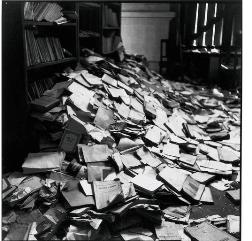
Zhou acted to stabilize China by reviving educational system and restoring numerous former officials to power. In 1972, however, Mao suffered a stroke; in the same year, Zhou learned he had cancer. The two leaders threw their support to Deng Xiaoping (who had been purged during the first phase of the Cultural Revolution), a development opposed by the more radical Jiang Qing, Mao’s wife and her allies of the Gang of Four. In the next several years, Chinese politics teetered between the two sides. The radicals finally convinced Mao to purge Deng in April 1976, a few months after Zhou’s death, but after Mao died that September, a civil, police and military coalition pushed the Gang of Four out. Deng regained power in 1977 and would maintain control over China for the next 20 years.
Deng Xiaoping (1904-97) is the architect of modern China, the China we know today which stands on the brink of world domination. Like other mega leaders of modern China, Deng underwent enormous hardships and challenges in personal and political life. Put in charge of Tibet immediately after the Revolution in 1949 and later of South West China (which includes today’s Uighur region) Deng’s task was to consolidate Communist control over the peripheral regions. Denounced during Cultural Revolution, banished from power circle of Peking and having his son thrown out of window to be paralysed waist downward, Deng was brought back to reckoning in 1973 for repairing the damages of Cultural Revolution for his legendary power of programme execution. Once Mao died Deng claimed unchallenged supremacy in 1978 when he outmanoeuvred Hua Guofeng, the designated successor of Mao, to become the paramount leader in CPC. Deng was a pragmatist to temper ideology to suit China’s immediate needs and was not averse to turn Communist ideas of production characterised by his famous quote ‘ it doesn’t matter whether a cat is white or black as long as it catches mice’.
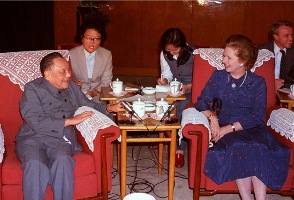
Deng authored China’s ‘open door policy’ to attract foreign investment, created market economy and private sector and set up special economic zones for foreign investment and making them free of bureaucratic intervention and corruption, setting China towards rapid and smooth industrial activities, things Mao tried in every wrong way. He advocated patience to make China acquire sufficient muscles for carrying out its historical mission and managed the bloody nose received from Vietnam early into his reign. He was as ruthless as all great Chinese leaders too as his actions against Tiananmen Square protesters demonstrated. He never deviated from China’s historic goal by standing firm against Thatcher to end Hong Kong lease. His best tribute comes from the old fox Kissinger: “As time went on, I developed enormous regard for this doughty little man with melancholy eyes who had stuck to his cause in the face of extraordinary vicissitudes…”. For us he is important to have hosted Rajiv Gandhi to restore long suspended ties with India. The present strength and resolve of China owe a great deal to Deng. Jiang Zemin and Hu Jintao coming thereafter served as cautious custodians of Deng’s legacy keeping China rising under calm waters. China made steady economic process quietly and was clawing at Japan’s heels to become the second largest economy which it is now. It reestablished control over Hong Kong and Macao, saw off various tensions with US and NATO, entered the WTO, smoothly managed the economic crisis of 2008 and even hosted a grand Olympics in Beijing. Xi Jinping, who combines assertiveness with insecurity, would soon change it though.
At the 19th Chinese Communist Party National Congress on Oct. 18, 2017, Xi Jinping articulated a new era with the historic mission to “realize the Chinese Dream of national rejuvenation.” For its implementation, Xi laid out a timeline with three major target dates: By the Party Centenary in 2021, China should “finish building a moderately prosperous society in all respects.” By 2035, China should be much stronger economically and technologically, have become a “global leader in innovation,” and have completed its military modernisation. By the People’s Republic of China Centenary in 2049, China should have “resolved the Taiwan question” and be a “strong country” with “world-class forces.” Insisting that Party leadership is crucial to the realization of this “Chinese Dream,” Xi gave his term unlimited extension.
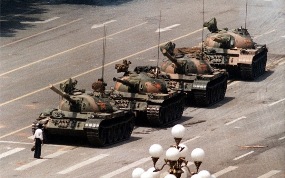
China under Xi is relentlessly working on the goals set for the three dates, 2021, 2035 and 2049. Beyond the benign statements given to the world the actual vision set for these dates are quite different. 2021 is the timeline by which immediate neighbourhoods must be controlled. While Hong Kong seems to be done and dusted, Taiwan still proves elusive(by 2035 may be). There is another secret plan to add five fingers to the palm that is already acquired in shape of Tibet, five fingers being Ladakh, Nepal, Sikkim, Bhutan and Arunachal Pradesh. The net is slowly spreading over Ladakh and Nepal as I write this. Xi is obsessed with the pride of old Middle Kingdom with which comes the paranoia of enemies striving to frustrate China’s quest for past glory. Back home antagonists in the Party who prefer less aggressive means invite purge while the entire scheme of Xi has to be sold to people by relentless propaganda through China’s formidable propaganda machinery. The power projection is maintained by the military which is uniquely controlled in China not by the government but by the Party. Xi Jinping is set to become the unchallenged monarch of the world.
And how far have China come to realise its dream? At its peak the Middle Kingdom was world’s dominant scientific, economic, trade and military power. Its present position is not bad either. It is on the path of becoming the dominant economic power, its position in AI might give it dominant scientific prowess in near future, it is carefully and systematically building up military muscle, particularly Naval power to match US, and it is already the major trading partner with most countries in the world. Its ambitious BRI is planned to restore its compl trade dominance both on land and sea. It has already captured most International Institutions those matter. It dominates the WHO, UNESCO, UNHRC, World Bank, and United Nations at large. It controls Asian Infrastructure Bank to challenge the IMF and holds maximum dollar reserve; and by throwing dollar loans at every country China can not only dump the dollar but would acquire vital assets everywhere. The Wuhan Virus, whether planned or not, has given them the unique opportunity to skin every other country through their production machine and surplus dollar. Xi’s vision looks very near to grasp and he can actualise his BRI to make China the global trade hub it once was. Then Xi can claim the superiority of the Chinese political system which Deng described as ‘socialism with Chinese characteristics’ and can persuade the world to adopt it as the best welfare and liberal capitalistic model. When this becomes the ultimate model to copy that would be truly Fukuyama’s End Of History! This is the total world domination plan of China on which Xi aims to report progress to his people on CPC Centenary in 2021.
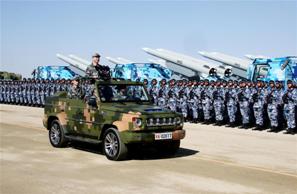
Is there a downside to this scenario for China? With every one fighting the pandemic and the kind of pedestrian leadership prevailing in the free world, the only threat to Xi can be internal, and there are plenty. China has systematically controlled its information and archives. Countries appraise their past in order to find path to its chosen future, but China is different. It has chosen its future and has been systematically painting its history to suit the future. Hard opacity prevents us from realising that China is not a big homogeneous country. Its internal components are as diverse as you can get. Core China is of single ethnicity of Han people confined to 18 provinces of the Eastern Sea Board. These Han people have dominated all other provinces, considerably bigger in size but low on population and water resources, prominent among them being Manchuria, Lower Mongolia, Tibet, Xinxian and Yunnan on the mainland. These people are non Han and were never part of Chinese kingdom in the past. Most glaring is Lower Mongolia which lies north of the Great Wall which was traditionally Imperial China’s border. All these vast tracts of land has been occupied systematically by Han Chinese for strategic reasons and also for resources. All these peripheral regions are being systematically swamped by Han settlements to change demography, the Uighur region being current example. Strategic creation of provinces and autonomous regions keeps one China banner afloat. For instance, after occupying Tibet in 1950 they divided it to integrate northern part as Qinghai Province while retaining the South as Autonomous Region of Tibet. Important to note that the source of two great rivers, Yellow and Yangtse, lies securely in newly formed Qinghai regular province.
A sketch map of China is circulating these days in social media (see photos). It can seen on that map, around the eastern sea board of Han China which is the proper China there are vast territories integrated into the Chinese State as either regular provinces or Autonomous Territories inhabited by non Han people described as Chinese Occupied Manchuria, Mongolia, Yunnan, Tibet, Ladakh and East Turkestan of the Uighur people. These peripheral areas are China’s fault lines bearing enormous potential for trouble in Chinese Dream. China today is the only country harbouring limitless territorial ambition. Add the situation in South China Sea to that circus and you have plenty of possibilities for repercussion both for China and rest of the world. How Xi handles China’s ambition would decide the future for China and himself. This ultimate downside facing Xi’s China perpetuates collective paranoia leading towards relentless propaganda both to its own people and the world. That’s why China bullied every one to name the virus COVID 19 in stead of the traditional WHO naming as Wuhan Virus. Unlike Western nations, whose decentralization frustrates deliberate pursuit of a consistent grand strategy yet facilitates tremendous resilience, Communist China so comprehensively controlled by Xi is brittle and highly vulnerable to domestic instability. Xi has reintroduced additional vulnerability to the system removing limits to his reign and launching severe “anti-corruption campaigns” against rivals. He has scrapped Deng’s relatively stable, reliable, and consensus-based system of elite interest management. Deng’s China had replaced Mao’s excesses and a system in which losers of political struggles often died, it was designed to enhance stability by sharing decision-making and benefits more broadly among top elites while reducing the stakes for factional infighting. Instead, Xi has reverted to a winner-takes-all system in which the paramount leader monopolizes decision-making and responsibility. Should economic growth continue slowing, and other problems emerge, Xi may come under tremendous pressure. Once Xi becomes weak, sick, old, or dies, various interests within China will likely have a weakened institutional ability to deal with the distribution of interests and managing factional rivalry.
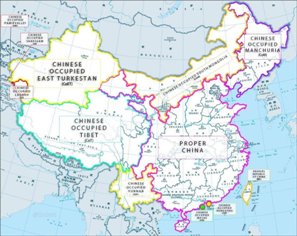
That leaves us with the question as to where does India stand in this China epic. Having fallen way behind China in practically everything India has very little option. Deeply fractured in its polity and bereft of strategic vision India is floundering by the day. In major football leagues of the world there are some teams permanently branded as mid table clubs. Each year they begin their campaign with lot of fanfare and ambition, beat a top of the table team or two raising hopes for higher achievement. But no sooner they beat a top team than they get upset by lowly ones fairly regularly. So they remain mid table perpetually more anxious for not dropping down to the bottom than climbing to the top. In my over half a century following of global football I have seen plenty of these types of mid table teams who appear on the stage with new owner, new manager New Jersey and fresh stars only to fade quickly into their mid table habit. India unfortunately fits that classification perfectly, it’s a global mid- table nation. When it struggles to get past Nepal, China remains a distant dream. And it is independent of the present Ladakh situation where India’s fingers are firmly under Chinese boots (borrowing the expression from Lt Gen H S Panag).
(Jena, former Principal Chief Income Tax Commissioner, concludes)





